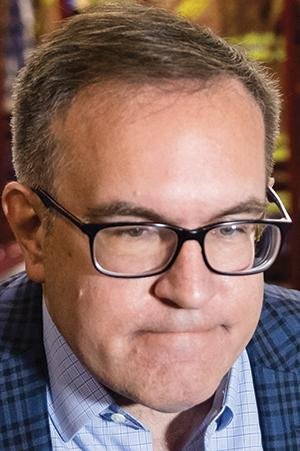WASHINGTON -- The Trump administration declined Tuesday to tighten a regulation on industrial soot emissions that came up for review ahead of the coronavirus pandemic.
Andrew Wheeler, head of the Environmental Protection Agency, said his agency will not impose stricter controls on the tiny, lung-damaging industrial particles, known as PM 2.5, a regulatory action that has been in the works for months. The scientific evidence, he said, was insufficient to merit tightening the current emissions standard.
"We believe the current standard is protective of public health," Wheeler said in a telephone call with reporters Tuesday morning. "Through the five-year review process we've identified a lot of uncertainties. Through those uncertainties, we've identified that the current standard does not need to be changed."
The published proposal says that Wheeler places "little weight on quantitative estimates" of the mortality risk associated with fine soot pollution.
The decision drew praise from Republican lawmakers and the nation's oil companies and manufacturers, which had said a tighter regulation on smokestack emissions of fine soot would harm their economic viability -- even before the global health crisis cratered the global economy.
"The certainty of holding these standards steady allows businesses in Oklahoma to plan, comply and hopefully grow after this incredibly difficult economic period," said Kenneth Wagner, energy secretary of Oklahoma, a major oil- and gas-producing state that has long pushed for looser environmental rules.
But public health experts say that the move defies scientific research, including the work of the EPA's own public health experts, which indicates that PM 2.5 pollution contributes to tens of thousands of premature deaths annually and that even a slight tightening of controls on fine soot could save thousands of American lives.
Last week, researchers at Harvard released the first nationwide study linking long-term PM 2.5 exposure to death rates from covid-19, the disease caused by the coronavirus. The study found that a person living for decades in a county with high levels of fine particulate matter is 15% more likely to die from the coronavirus than someone in a region with one unit less of the fine particulate pollution.
"The timing of this is unbelievable," said Richard Lazarus, a professor of environmental law at Harvard. "There's this big study that just came out linking this pollutant to covid. This seems like a colossal mistake on the administration's part."
Paul Billings, a senior vice president of the American Lung Association, noted that the Harvard study came on top of other reports that linked the pollutant to premature deaths. "This pollution already kills tens of thousands of Americans every year. This is an affirmation of a standard that already does not provide adequate safeguards to public health," he said.
Because the Harvard study was published last week, after White House lawyers had already largely completed a lengthy review of the proposed rule, Wheeler said that its findings were not included in the EPA's legal rationale.
"The Harvard study has just been released. It has not yet been peer reviewed or fully vetted," Wheeler said. He added, "We think the information is interesting, and we want to know more about it."
But he also took aim at its authors, some of whom have publicly criticized decisions made by the Trump administration.
Lazarus said he expected that the EPA would ultimately be legally forced to incorporate the findings of the Harvard study into the rationale for the rule before it is made final, likely later this year. "It will eventually be part of the legal record," he said. "Historically, Harvard's public health studies have been central to EPA public health rules."
The proposed rule, which will be open to public comment for 60 days before being reviewed by the White House and made final, retains a standard enacted in 2012. That rule limited the pollution of industrial fine soot particles -- each about 1/30th the width of a human hair but associated with heart attacks, strokes and premature deaths -- to 12 micrograms per cubic meter. By law, the EPA is required every five years to review the latest science and update that standard.
When EPA scientists conducted that mandatory review, many concluded that if the federal government tightened that standard to about 9 micrograms per cubic meter, more than 10,000 American lives could be saved a year.
A Section on 04/15/2020
